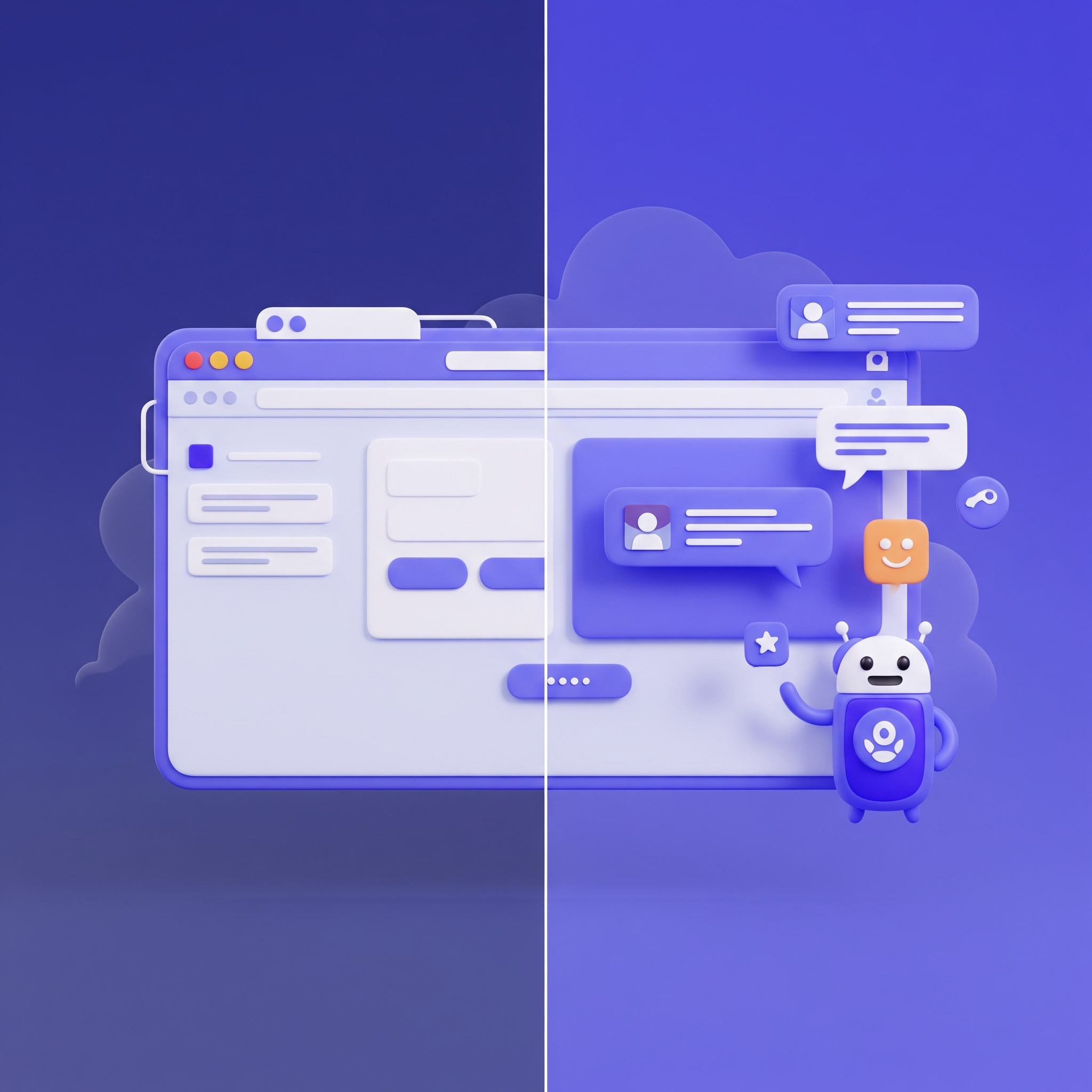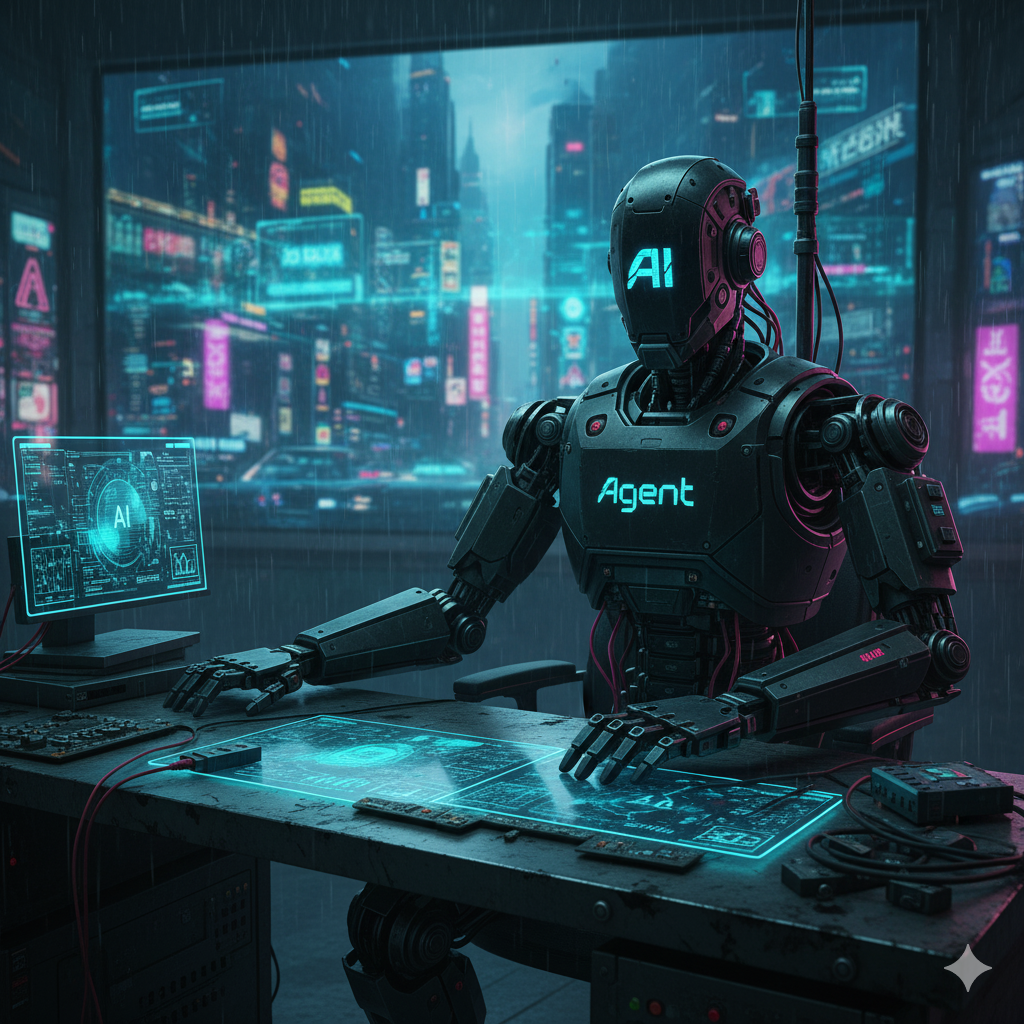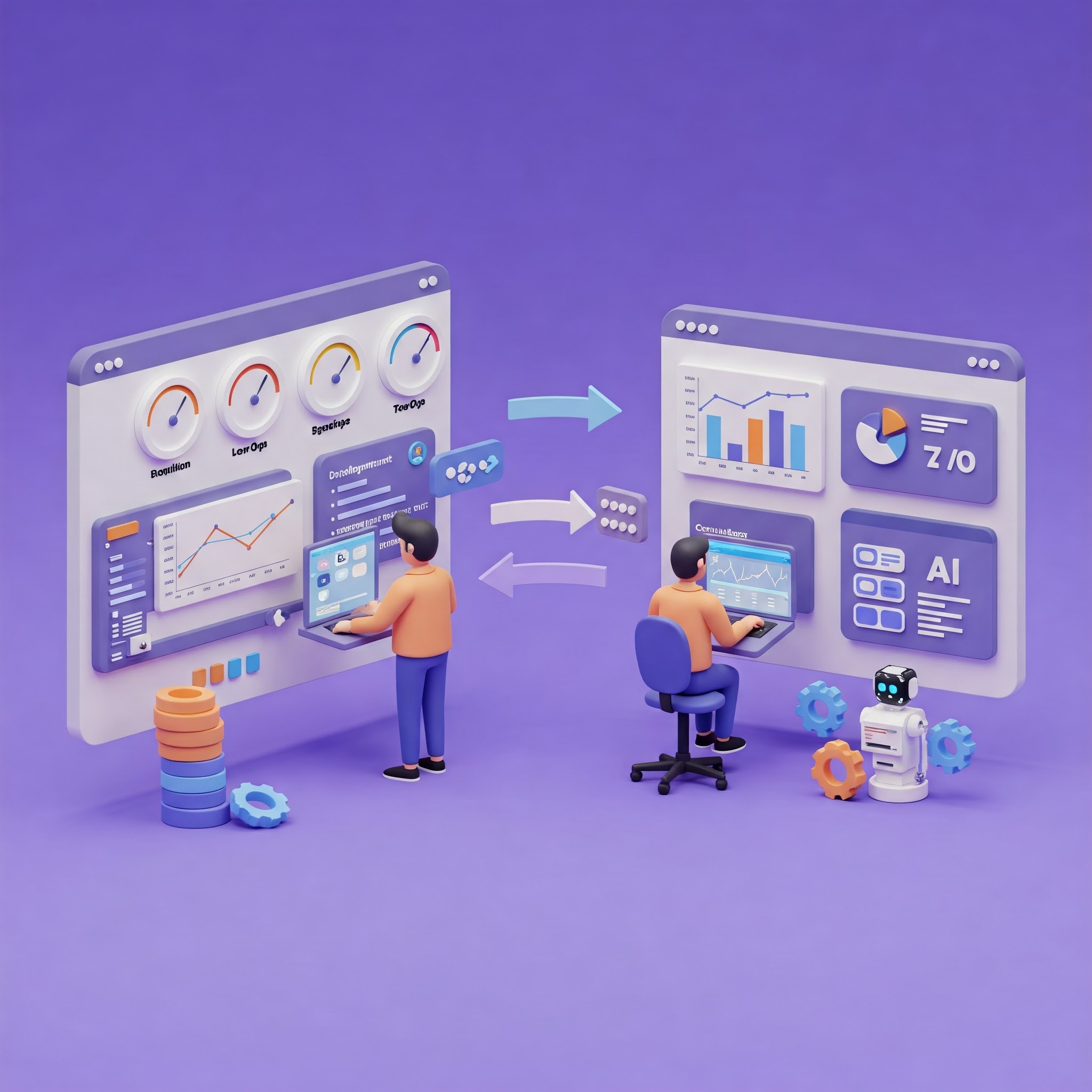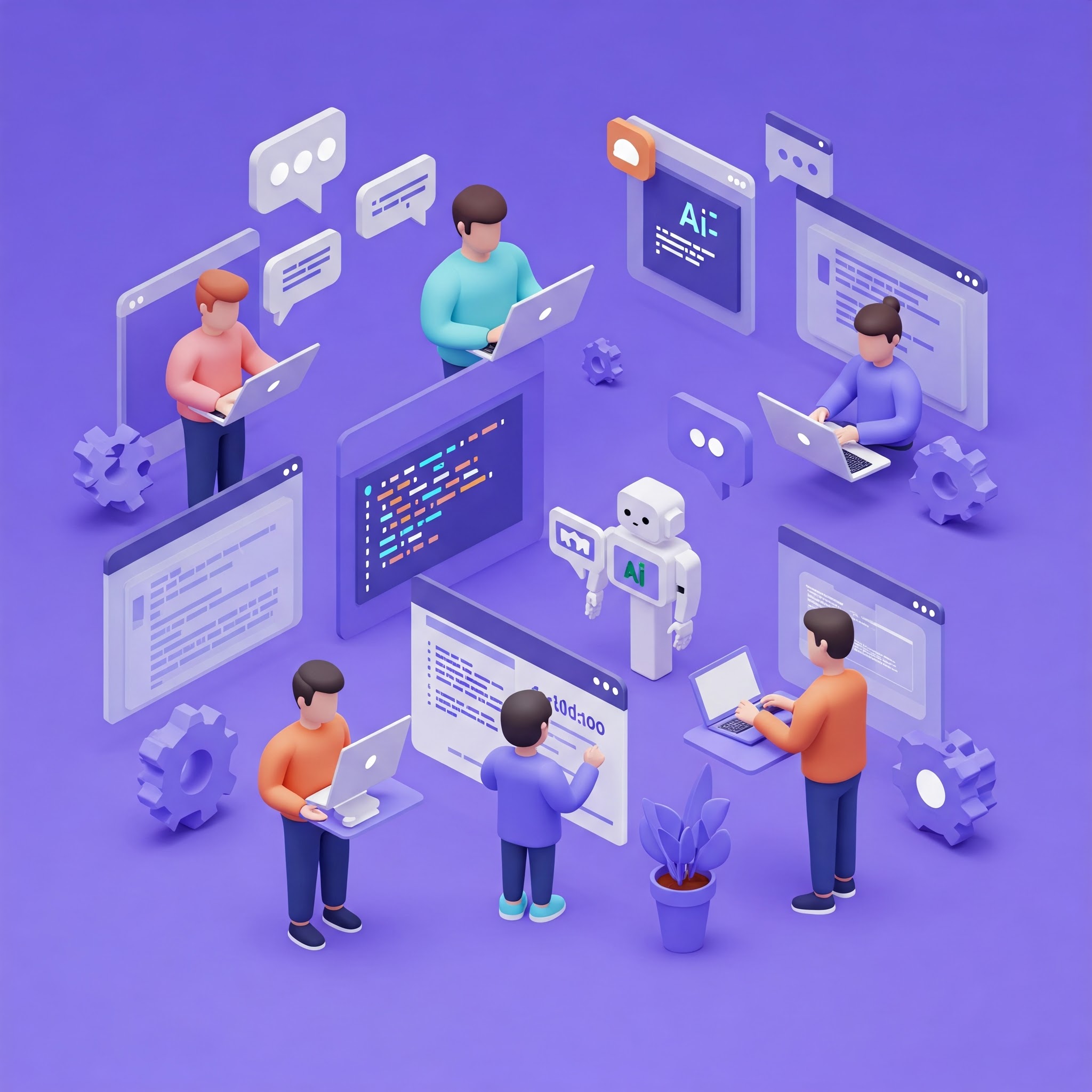
How to Build Your First AI Agent: A Practical Guide for Developers
Master AI agent development with this comprehensive tutorial. Build autonomous agents that perceive, decide, and act using popular frameworks like LangChain and CrewAI.

Building your first AI agent transforms how you approach automation and intelligent decision-making in software development. This guide walks you through creating autonomous agents that perceive their environment, make decisions, and execute actions to achieve specific goals.
Understanding AI Agents: Beyond Simple Automation
AI agents differ from traditional automation by their ability to reason, adapt, and make decisions based on changing conditions. While a script follows predefined steps, an AI agent evaluates situations and chooses appropriate actions dynamically.
Consider the difference: a traditional script processes emails in a fixed sequence, while an AI agent analyzes email content, understands context, prioritizes responses, and adapts its behavior based on sender importance and message urgency.
Step 1: Define Your Agent’s Purpose and Scope
Start with specific objectives rather than broad aspirations. Instead of “build a helpful AI assistant,” define measurable goals:
- Customer Support Agent: Resolve 80% of common inquiries without human intervention
- Code Review Agent: Identify security vulnerabilities and suggest improvements in pull requests
- Content Moderation Agent: Flag inappropriate content with 95% accuracy while maintaining 2% false positive rate
Clear objectives guide framework selection, training data requirements, and success metrics.
Step 2: Choose Your Development Framework
Modern AI agent frameworks handle complex orchestration, memory management, and tool integration. Here are the leading options:
LangChain: Comprehensive LLM Integration
Best for agents requiring sophisticated reasoning and tool usage. LangChain provides:
- Pre-built agent architectures (ReAct, Plan-and-Execute)
- Memory management for persistent conversations
- Tool integration for external APIs and databases
- Chain composition for complex workflows
CrewAI: Multi-Agent Collaboration
Ideal for complex tasks requiring specialized agents working together:
- Role-based agent design
- Task delegation and coordination
- Built-in collaboration patterns
- Process orchestration
AutoGPT: Autonomous Goal Pursuit
Suited for agents that need to break down high-level goals into actionable steps:
- Goal decomposition
- Self-directed task execution
- File system interaction
- Web browsing capabilities
Step 3: Set Up Your Development Environment
Create a robust foundation for agent development:
# Create and activate virtual environmentpython -m venv ai_agent_envsource ai_agent_env/bin/activate # Windows: ai_agent_env\Scripts\activate
# Install core dependenciespip install langchain langchain-openai python-dotenvpip install faiss-cpu # For vector storagepip install streamlit # For UI (optional)Configure environment variables for API keys:
# .env fileOPENAI_API_KEY=your_openai_key_hereLANGCHAIN_TRACING_V2=trueLANGCHAIN_API_KEY=your_langchain_key_hereStep 4: Build Your First Agent - Customer Support Bot
Create a practical customer support agent that handles common inquiries using these core components:
Essential Components:
- Custom Tools: Functions for order status, return policy, and escalation
- Memory Management: Conversation history and context retention
- Prompt Engineering: Clear role definition and behavioral guidelines
- Error Handling: Graceful failure recovery and user feedback
Key Implementation Steps:
- Define custom tools for your business logic (order lookup, policy checks)
- Create a prompt template with system instructions and conversation flow
- Initialize the language model with appropriate parameters
- Combine components into an AgentExecutor with memory
Complete Implementation Examples:
- LangChain Customer Support Agent Tutorial
- LangChain Agents Documentation
- Agent Tools and Memory Management
Step 5: Add Memory and Context Management
Enhance your agent with persistent memory to maintain context across conversations:
Memory Types:
- Buffer Memory: Stores complete conversation history
- Summary Memory: Condensed conversation summaries to manage token limits
- Vector Memory: Semantic search across conversation history
- Hybrid Memory: Combines multiple memory types for optimal performance
Implementation Considerations:
- Set appropriate token limits to control costs
- Choose summarization strategies that preserve critical context
- Implement memory persistence for multi-session conversations
Detailed Guides:
Step 6: Implement Advanced Features
Error Handling and Retry Logic
Robust error handling ensures your agent maintains reliability under various failure conditions:
Key Patterns:
- Exponential Backoff: Progressively longer delays between retry attempts
- Circuit Breaker: Temporary service disconnection after repeated failures
- Graceful Degradation: Fallback responses when primary systems fail
- Input Validation: Pre-processing to catch malformed requests
Performance Monitoring
Track agent performance with comprehensive metrics and logging:
Essential Metrics:
- Response time distribution and percentiles
- Error rate and categorization by type
- Token usage and cost tracking
- User satisfaction and conversation completion rates
Implementation Resources:
- Python Retry Patterns and Best Practices
- Observability for LLM Applications
- Production Monitoring with Prometheus
Step 7: Create a Multi-Agent System with CrewAI
For complex tasks requiring collaboration, build specialized teams of agents:
Multi-Agent Architecture Benefits:
- Specialized Expertise: Each agent focuses on specific domain knowledge
- Parallel Processing: Multiple agents work simultaneously on different aspects
- Quality Control: Agents review and validate each other’s work
- Scalable Workflows: Add or remove agents based on task complexity
Key Components:
- Agent Roles: Define clear responsibilities and expertise areas
- Task Coordination: Manage dependencies and information flow
- Process Management: Sequential, parallel, or hybrid execution patterns
- Output Integration: Combine individual agent contributions into final results
CrewAI Implementation Resources:
- CrewAI Documentation and Tutorials
- Multi-Agent System Design Patterns
- Building Collaborative AI Teams
Step 8: Testing and Validation
Comprehensive testing ensures your agent performs reliably across various scenarios:
Testing Strategies:
- Unit Tests: Validate individual tool functions and agent components
- Integration Tests: Test complete agent workflows and tool interactions
- Performance Tests: Measure response times under various loads
- Edge Case Testing: Handle malformed inputs and system failures
- User Acceptance Testing: Real-world scenario validation
Key Test Categories:
- Functional Testing: Verify correct responses to expected inputs
- Error Handling: Ensure graceful failure modes and recovery
- Security Testing: Validate input sanitization and access controls
- Load Testing: Performance under concurrent user scenarios
Testing Framework Resources:
Step 9: Deployment and Production Considerations
Transform your development agent into a production-ready service:
Containerization with Docker
Container Benefits:
- Consistent deployment across environments
- Simplified dependency management
- Scalable infrastructure integration
- Version control and rollback capabilities
Docker Best Practices:
- Multi-stage builds for optimized image sizes
- Non-root user execution for security
- Environment variable configuration
- Health check implementations
API Deployment with FastAPI
Production API Features:
- Asynchronous request handling for better performance
- Request validation and error handling
- Authentication and rate limiting
- API documentation and testing interfaces
FastAPI Advantages:
- Automatic OpenAPI documentation generation
- Built-in request/response validation
- High performance with async support
- Easy integration with monitoring tools
Production Monitoring
Essential Monitoring Components:
- Request/response metrics and latencies
- Error tracking and alerting systems
- Resource utilization monitoring
- Cost tracking for LLM API usage
Implementation Resources:
- FastAPI Production Deployment Guide
- Docker Best Practices for Python
- Production Monitoring with Prometheus
Step 10: Optimization and Scaling
Enhance agent performance and handle increased traffic effectively:
Caching for Performance
Caching Strategies:
- Response Caching: Store responses for identical or similar queries
- Embedding Caching: Cache vector representations for semantic search
- Model Caching: Keep models in memory to reduce initialization overhead
- Tool Result Caching: Cache external API responses when appropriate
Cache Implementation Options:
- In-memory caching with LRU eviction for single instances
- Redis for distributed caching across multiple services
- Database caching for persistent storage between restarts
Load Balancing Multiple Agents
Scaling Approaches:
- Horizontal Scaling: Multiple agent instances behind load balancer
- Vertical Scaling: More powerful hardware for single agent
- Hybrid Scaling: Combination based on traffic patterns and requirements
Load Balancing Strategies:
- Round-robin distribution for equal load sharing
- Least-connections routing for optimal resource utilization
- Geographic routing for reduced latency
Scaling Resources:
Key Takeaways for Building Production-Ready AI Agents
Building effective AI agents requires attention to several critical areas:
Architecture Design: Start with clear objectives and choose frameworks that match your complexity requirements. LangChain excels for single-agent systems with complex reasoning, while CrewAI handles multi-agent collaboration effectively.
Testing Strategy: Implement comprehensive testing including unit tests for individual tools, integration tests for agent workflows, and performance tests for response times and accuracy.
Production Readiness: Consider error handling, monitoring, caching, and scaling from the beginning. Production agents need robust error recovery, comprehensive logging, and performance optimization.
Continuous Improvement: Monitor agent performance in production and iterate based on real user interactions. Collect feedback on response quality and adjust training data accordingly.
Your first AI agent marks the beginning of building intelligent automation that adapts and improves over time. Focus on solving specific problems well rather than trying to build general-purpose intelligence immediately.
Connecting AI Agents to Developer Productivity
At PullFlow, we’ve seen firsthand how context switching between GitHub, Slack, and browser tabs disrupts developer flow during code reviews. Our PullFlow AI brings intelligent assistance directly into Slack conversations, eliminating the need to hunt through documentation or switch between tools when discussing pull requests.
The AI agent principles in this tutorial mirror exactly what makes PullFlow AI effective in real development workflows:
Contextual Intelligence: Just as the customer support agent in this tutorial maintains conversation context, PullFlow AI understands your pull request discussions and provides relevant insights without losing track of the conversation thread.
Natural Language Interaction: Instead of memorizing commands or switching tools, developers can ask PullFlow AI questions in natural language - the same approach we demonstrated for building conversational agents.
Seamless Tool Integration: The multi-agent coordination patterns you learned here reflect how PullFlow AI integrates GitHub data with Slack conversations, creating a unified workflow without forcing developers to context switch.
Knowledge Repository: The memory management techniques covered in this guide enable agents like PullFlow AI to serve as your team’s always-on knowledge hub, providing instant access to previous discussions, best practices, and implementation decisions.
When you build AI agents using the frameworks and patterns in this tutorial, you’re creating the same type of intelligent automation that PullFlow AI delivers for code reviews - tools that enhance collaboration, reduce cognitive overhead, and keep developers in their flow state.
Next Steps
- Experiment with different LLM models to optimize for your specific use case
- Implement custom tools that integrate with your existing development stack
- Explore advanced memory management for maintaining context across conversations
- Build multi-agent systems that coordinate complex development workflows
- Create agents that bring intelligence directly into your team’s collaboration tools
The field of AI agents evolves rapidly, with new frameworks and techniques emerging regularly. Stay current with the latest developments while focusing on building practical solutions that eliminate context switching and keep your team in flow state.
Ready to experience AI-powered code reviews without the complexity of building from scratch? Try PullFlow AI and see how intelligent automation can enhance your Slack-based development workflow today.


